Stick your nose into the bark of a tall, old ponderosa pine, and you’ll get a distinctive whiff of vanilla or butterscotch. Or maybe a nose full of sap.
The smell and the sap represent just the tip of the iceberg of ecological relationships at work in a ponderosa pine forest. Like an unruly family, the chemicals, plants, insects and birds do their thing, unwittingly helping the trees and the forest.
Birds, Insects and “Terpenes”
Back to the butterscotch. The smell is from chemicals in pine bark called terpenes. These chemicals play a vital role in plants. In some plants, terpenes attract pollinators, while in other plants, they repel predators, such as insects or foraging animals.
In ponderosa pines, these terpenes benefit the tree’s “immune system.”
When tiny pigmy nuthatches, mountain chickadees or yellow-rumped warblers stop by to snack on ants or aphids on the tree bark, they alter the chemical composition of these terpenes to benefit the tree, according to University of Colorado research published in the August issue of Ecology.
The birds act as tree protectors, helping to keep insects in check. By altering the terpenes, they increase the tree’s resistance to parasites and plant-eating insects, according to the study’s lead author Kailen Mooney. That in turn enhances the tree’s vigor and growth.
This finding has implications for dry pine forests across the West, which have been ravaged by damaging insects like bark beetles.
The alteration of terpene “flavor” can have wide effects, since terpenes influence how creatures like bark beetles, porcupines and squirrels decide which trees to feed on.
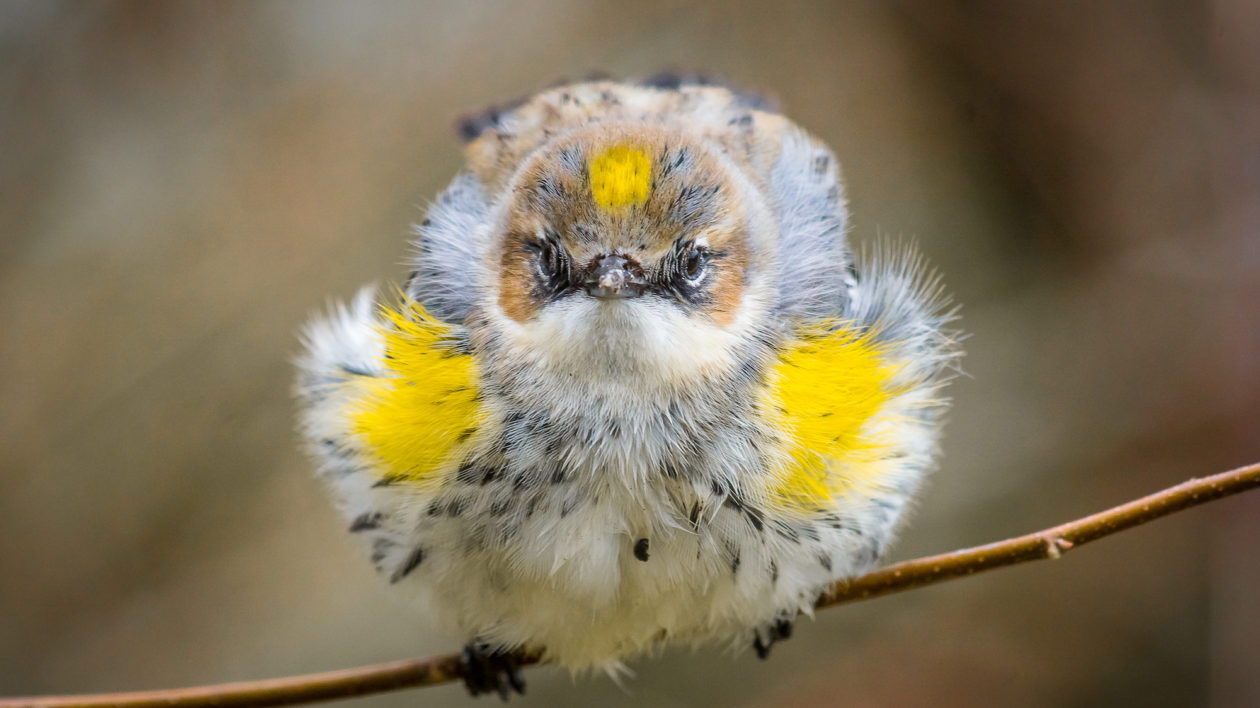
A Sappy Solution to Bark Beetles?
Other studies show that ponderosa pines killed by bark beetles had fewer and smaller resin ducts than trees that survived bark beetles.
This suggests that more, larger resin ducts confer some resistance to bark beetles. The research, by University of Montana scientists, also shows that low-severity fire induces resin-duct production and can trigger a long-lasting defense that may increase tree survival.
Flying Squirrels and Moisturizing Mushrooms
Large stands of ponderosa pine are also part of a mutually dependent relationship involving Abert’s squirrels and mushrooms.
Look high in the forest canopy to find the squirrels, known by their tufted ears and ability to “fly” through the air from tree to tree. Ponderosa pines provide the squirrels with just about everything they need for food and shelter. They eat the inner bark of twigs in the winter and seed from pine cones in the summer.
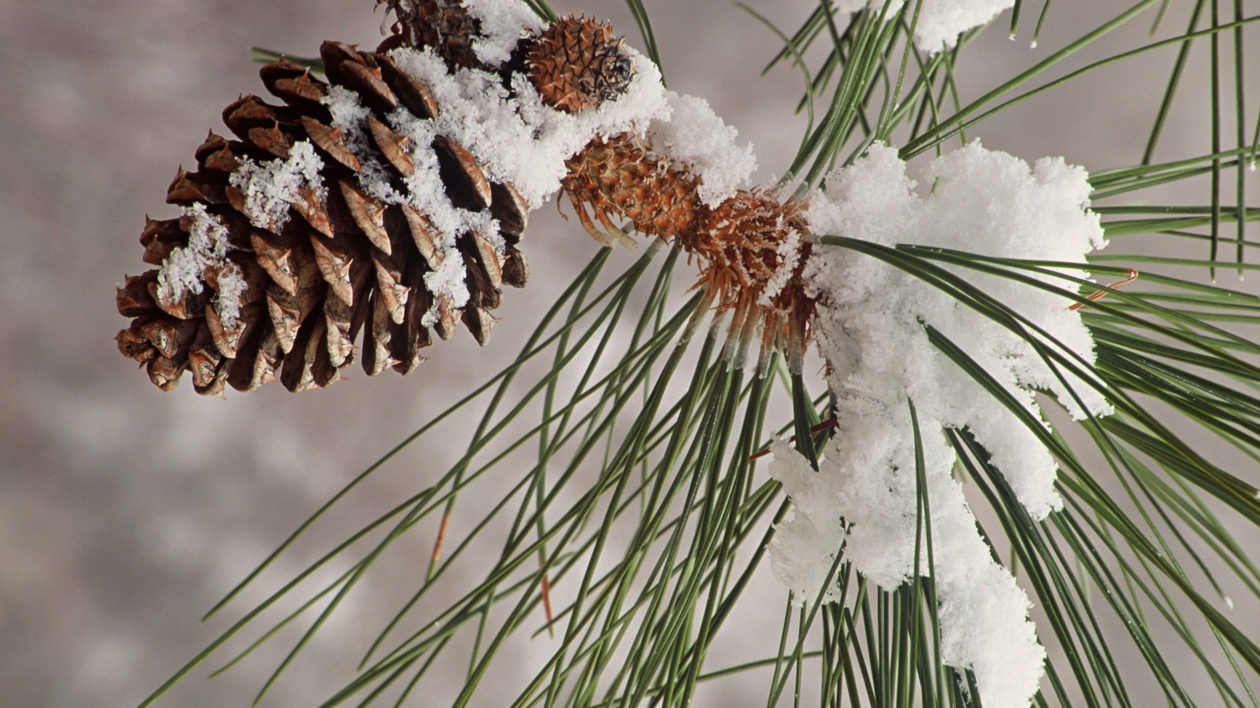
From late spring to early fall, the squirrels also eat mushrooms, which are the above-ground part of mycorrhizal fungi found in soil. The fungi extend the reach of the tree’s roots, helping them get to more water, phosphate, nitrogen and other nutrients, while the tree provides the fungi with carbohydrates.
When the squirrels eat the mushrooms, the spores survive in the squirrel’s digestive tract and come out in its scat, that is spread throughout the forest
It’s a mutually beneficial arrangement. The fungi grow around the tree roots and help to maintain moisture in an arid environment. Scientists also speculate that trees of different species can communicate and support one another via their mutual mycorrhizae.
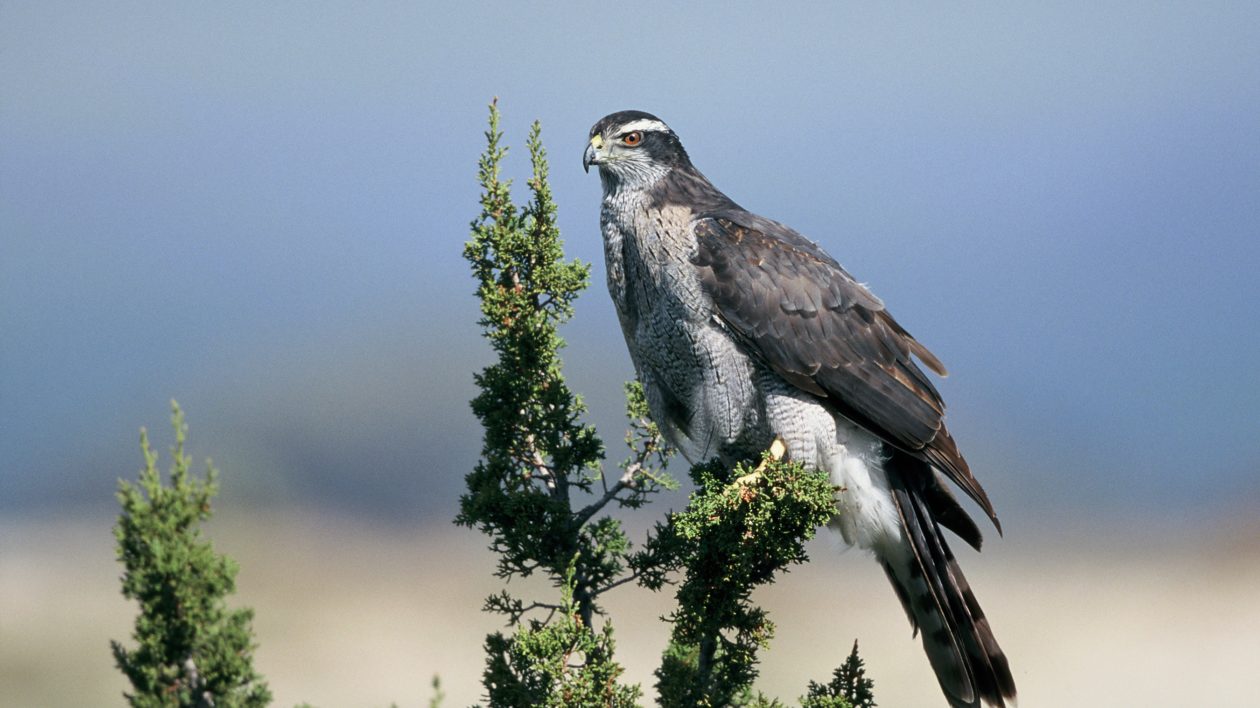
Goshawks
Northern goshawks are a top predator of the forest. Stealthy hunters, goshawks rely on a healthy prey base, which includes grouse, squirrels, rabbits, crows and other birds. They hunt and train their young along forest edges, streamside areas and shrub habitat.
Goshawks usually prefer the largest trees for nest sites. Male and female pairs may build several nests, which they maintain by adding fresh conifer needles. Those needles contain terpenes – there’s that word again — which may act as a natural insecticide and fungicide, according to Cornell University’s Lab of Ornithology.
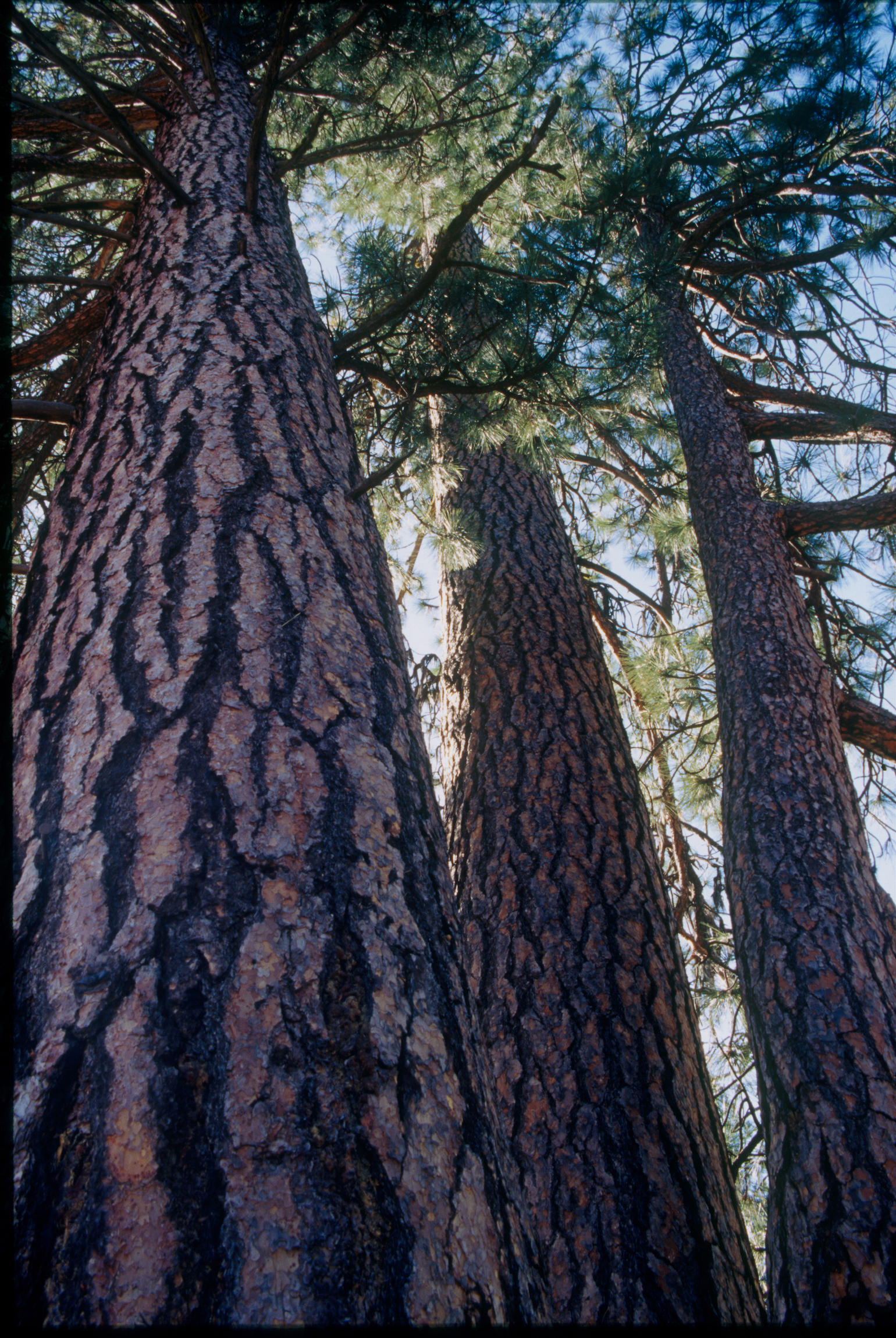
Carbon Storage
A tree has the ability to provide an essential of life for all living things: oxygen. Trees also have the power to store carbon dioxide, making the air we breathe healthier. Through photosynthesis, a pine tree’s needles pull in carbon dioxide and water, and use the energy of the sun to convert this into food for the tree.
A by-product of that chemical reaction, oxygen, is released by the tree. Older pine trees produce more oxygen than younger trees, and because pines don’t lose their needles in winter, they produce oxygen all winter long.
Trees also store carbon dioxide in their fibers helping to clean the air and reduce the amount of CO2 released into the environment. According to the Arbor Day Foundation, in one year a mature tree will absorb more than 48 pounds of carbon dioxide from the atmosphere.
A Web of Mysteries
Arizona’s ponderosa pine forests are home to a complex web of creatures and interactions. But due to almost a century of fire suppression, these forests have become overgrown, unhealthy and susceptible to catastrophic fire that can kill even the tallest ponderosa pines, and the species that make up the forest’s ecology.
To restore pine forests to good health, managers must take care to understand their needs for sunlight, open spaces and frequent low-level fire. Healthy pine forests are critical for their plant and animal residents and the many mysterious life forms that depend on the trees.
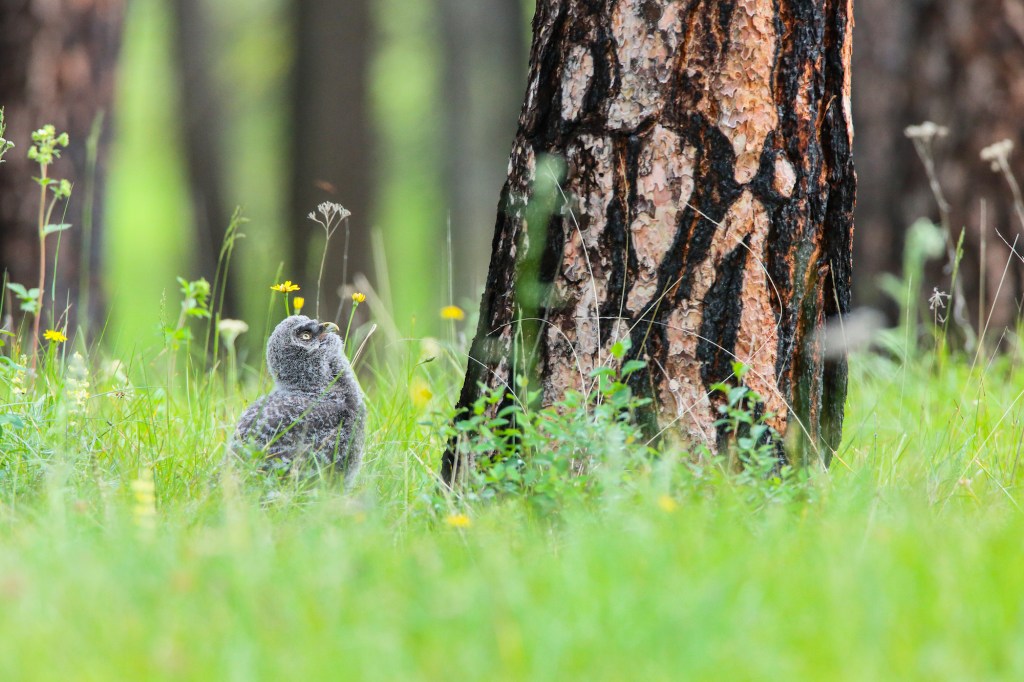



Hello I have a 150ft tall ponderosa pine tree that the bark has a horizontal wave to it on the north side and the tree leans a bit to the north same side as the bark waves.
The horizontal bark waves are from the ground up about 14 inches.
Is this normal?
Thank you, Paul
Regarding the paragraph about visiting birds altering the terpenes: Terpenes may be part of the trees’ immune system, and insects can damage their response/stress thier system, so the birds, by eating the insects, ‘alter the chemical composition’ in that indirect way (is my understanding from searching out an explanation via other sources). i.e – visiting birds help protect against insects, allowing a healthy immune system and therefore promote healthy chemical levels/terpenes production (which would be different if the insects didn’t have avian predators and remained)
Learned lots – Thanks for the article!
great thanks for so a thoroughly insight mother nature speaks to so many levels
michele éfache
Thanks for the article. It’s one of the best and most concise on the subject of the Ponderosa. I have been trying to find an answer to a few questions like why vanilla, what’s the function and what mechanism creates that particular scent. I know that terpenes can both assist the tree and draw in unwanted pests. Do you have info on the value of that particular vanilla scented terpene for the tree?
Hello. Great article. Any resources/information on companion plantings for Ponderosa Pine to increase defences against bark beetle? Mushrooms, shrubs, etc. And application of what? could increase the pines defence system.? I have under 50 Ponderosa Pine amongst White Oak in the Columbia River Gorge High Prairie. Many are becoming stressed & I fear infected. Thanks for your help. Any suggestions appreciated.
Patrice
You mentions that when “pigmy nuthatches, mountain chickadees or yellow-rumped warblers stop by to snack on ants or aphids on the tree bark, they alter the chemical composition of these terpenes to benefit the tree.” How does that happen?
Thank you for sharing this information on these beautiful beneficial trees. Thanks for all you do to help our world be a better place!
Please share that last sentence with our western state governors, who seem to either be naive about managing our forests, or are letting the fires get out of control on purpose, to promote the left’s narrative on “global warming”.
These last 8-10 years have been horrible for forest fires, where they have been left burning out of control for weeks and months!
We are not able to use the forests for normal activities in the summers, and the valleys where we live are filled with smoke so we cannot even participate in any normal outdoor activities! I use to have to work outdoors delivering mail in the awful smoke, with no recourse, before I retired. I now suffer with severe COPD, and am confined to the indoors with air conditioning during the summers, unable to enjoy normal outdoor activities . This happens every year now in the summers. We never grew up with this – we used to have proper forest management!